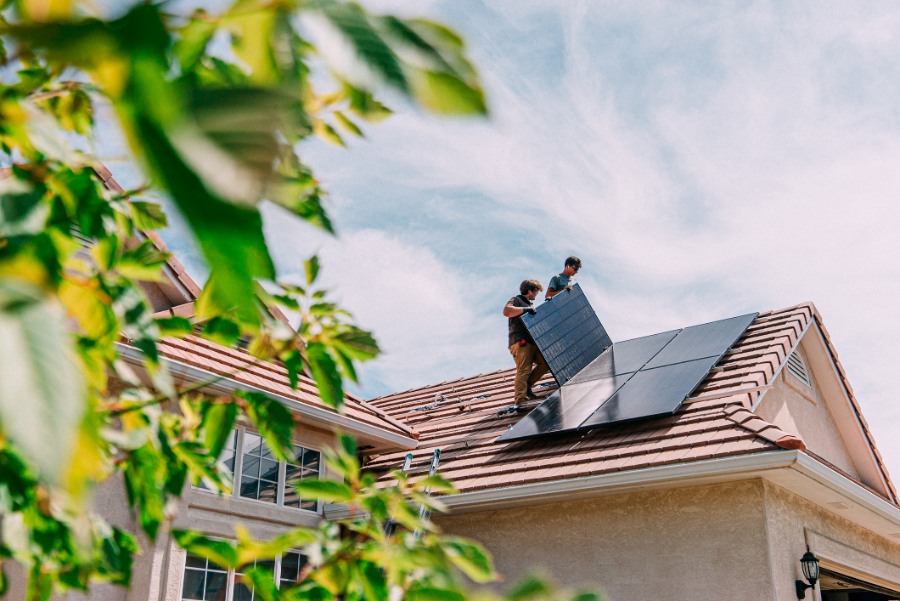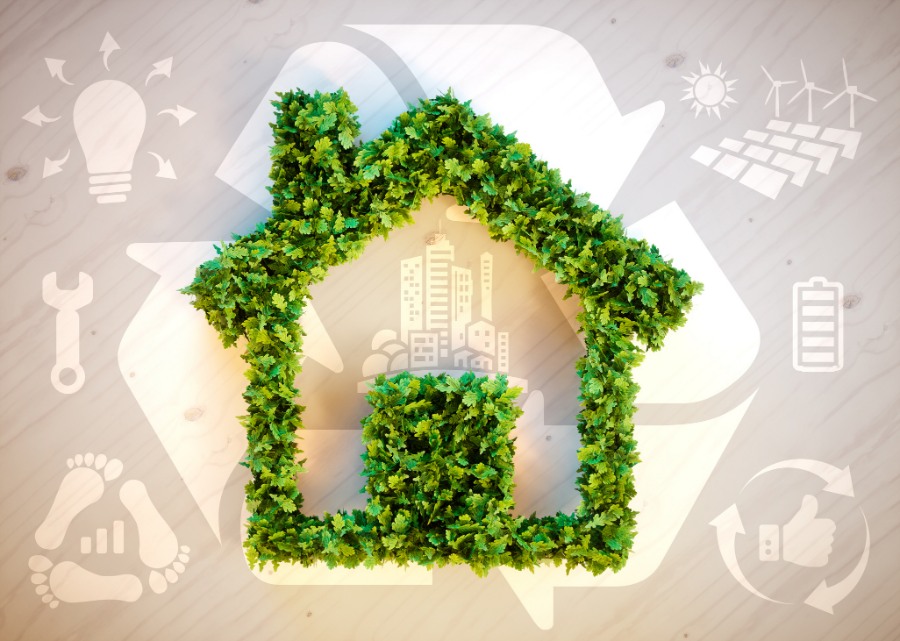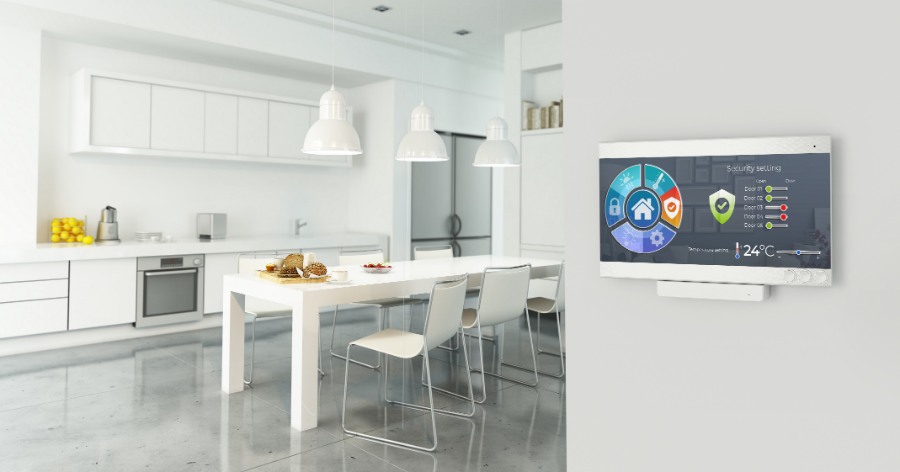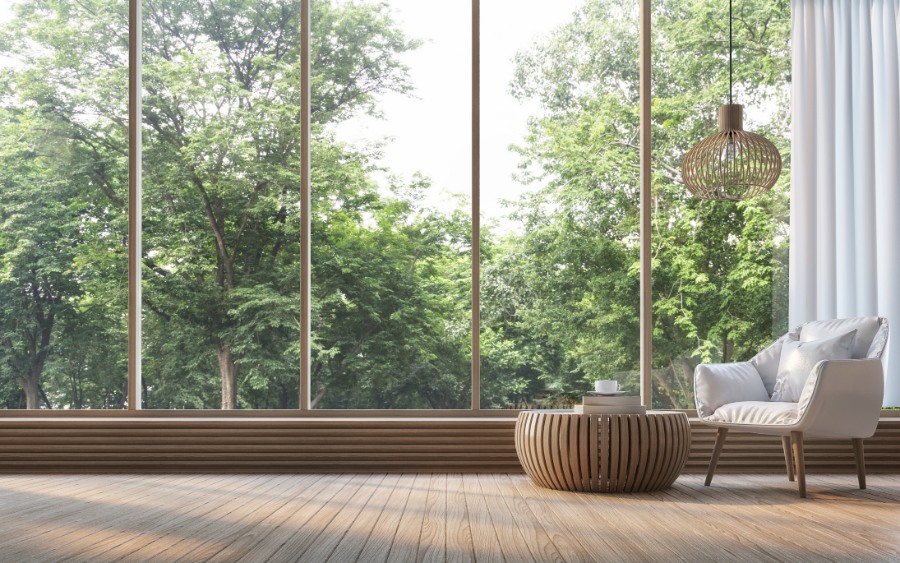
It’s no secret that home buyers are becoming more eco-conscious. A study conducted by E.ON Energy in 2020 showed that modern home buyers prioritize eco-friendly home features over factors such as the size of a garden. An even more recent survey by the National Association of Realtors reports that plenty of buyers have shown interest in greener homes.
Environmental consciousness has begun to impact the way many individuals select a home. The modern home is no longer just a place to live – it’s a place to live sustainably. And it’s not just the environment that benefits. Eco-conscious designs for homes not only minimize one’s carbon footprint but also offer significant savings in energy and utility costs.
In this guide, I’ll explore the top eco-friendly home features to look for when buying a home, how these features work, and the long-term benefits they offer.
Table of Contents
THE IMPORTANCE OF ECO-FRIENDLY HOMES

Eco-friendly homes are rapidly becoming the standard for new builds and even renovations. The global shift towards sustainable living has pushed homeowners, builders, and governments to prioritize features that conserve energy, reduce water waste, and use renewable resources.
Environmentally friendly house features benefit both the homeowner and the environment in various ways.
- Cost-efficiency. Energy-efficient systems reduce electricity, water, and gas usage, leading to significant cost savings.
- Year-round comfort. Insulated walls, energy-efficient windows, and smart HVAC systems keep temperatures consistent, making your home more comfortable throughout the different seasons.
- Better air quality. Homes with better ventilation systems and non-toxic materials are shown to improve indoor air quality.
- Higher resale value. As the demand for sustainable housing grows, homes that are energy-efficiency-rated tend to sell more than unrated homes.
11 ECO-FRIENDLY HOME FEATURES TO LOOK FOR
From effective insulation to window placement, there are several ways to increase a home’s energy efficiency. Make sure to spot these 11 key features that indicate a sustainable home.
- Energy efficient insulation
One of the key eco-friendly features to look for is high-quality insulation that helps maintain a stable temperature inside the home and reduces the need for heating and cooling.
TYPES OF INSULATION
Look for homes that use fiberglass, cellulose, or mineral wool insulation. These materials are excellent at trapping heat in the winter and keeping it out in the summer. They are often made out of recycled materials – cellulose from recycled newsprint and mineral wool from post-industrial recycled content, for example.
ENERGY SAVINGS
Proper insulation will reduce heating and cooling costs by an average of 15%, according to the Environmental Protection Agency (EPA). This feature helps homeowners reduce their energy consumption year-round, making it a critical investment for any eco-conscious buyer.
- Solar energy systems
Solar power is a hallmark of eco-friendly homes. It’s a renewable energy source that significantly reduces the reliance on fossil fuels and utility grid power.
SOLAR PANELS
These panels capture sunlight and turn it into electricity, providing a clean, sustainable energy solution for your home. With the right-sized system, many homes manage to generate enough energy to cover most, if not all, of their daily needs. Not only do solar panels lower your electricity bills but, in some areas, you may even sell extra power back to the grid, making it a win-win for both your wallet and the environment.
SOLAR WATER HEATERS
These heating systems use the sun to heat water for household use, drastically cutting down on electricity or gas costs for hot water.
BATTERY STORAGE
To get the most out of a solar setup, it makes sense to complete it with battery storage. This allows you to store extra energy collected during the day and use it at night or on cloudy days, ensuring a reliable power supply without always needing to tap into the grid.
- Energy efficient windows and doors
Do you know that windows and doors are often the main culprits for energy loss among homes? In an eco-friendly home, high-performance windows and properly sealed doors are essential for energy conservation.
DOUBLE- AND TRIPLE-GLAZED WINDOWS
Double- or triple-glazed windows contain multiple panes of glass with air or gas in between, acting as an insulator. These windows significantly reduce heat loss in winter and minimize heat gain in summer, which means they’re great at lowering energy costs for heating and cooling. Plus, they reduce the transmission of noise and sound.
SEALED DOORS
A properly sealed door prevents drafts and air leaks, helping to maintain consistent indoor temperatures. When searching for your next home, try to look for doors with tight seals and insulated cores.
- High-efficiency HVAC systems
HVAC systems are incredibly crucial for keeping indoor temperatures comfortable no matter the season. However, they may become energy hogs if outdated or poorly maintained. Conversely, modern, high-efficiency HVAC systems offer a range of eco-friendly benefits.
CHOOSING THE RIGHT HVAC SYSTEM FOR YOUR HOME AND CLIMATE
While looking at a system’s energy efficiency rating is a good starting point, it’s not the only factor that determines its performance. Make sure to take a look at the size and layout of your home. As a general rule, a smaller space with an open layout will require less energy to keep an ideal temperature. The opposite is true for larger spaces with more complicated layouts.
Location and climate also play an important role in choosing the most appropriate HVAC system for your house. For instance, heat pumps are great for both cooler and hotter months. However, if you live somewhere significantly colder and prone to harsh winters, a high-efficiency furnace may be more suitable for your needs.
ADVANCED HVAC TECHNOLOGY
High-efficiency HVAC systems use less energy while providing superior heating and cooling. Features such as variable-speed motors and smart thermostats help to optimize energy use by adjusting heating and cooling based on the time of day and a home’s occupancy levels.
SMART THERMOSTATS
Similarly, smart thermostats allow homeowners to control the temperature of their homes remotely and adjust settings based on their daily routine. These devices reduce heating and cooling costs by learning patterns and optimizing energy use, especially when the home is occupied.
- Smart home technologies

Smart technology, in general, is a great and exciting way to improve the energy efficiency of one’s home. It has revolutionized home energy management and, with the right systems in place, you’ll be able to monitor and reduce their energy consumption more effectively.
ENERGY MONITORING SYSTEMS
Homes equipped with smart energy monitoring systems allow homeowners to track their energy use in real time. These systems will pinpoint areas where energy is being wasted and suggest ways to optimize usage.
SMART LIGHTING AND APPLIANCES
Smart lighting systems automatically adjust to your environment, turning on or off depending on the amount of available natural light or when someone’s in the room. This helps reduce energy use without any extra effort on your part.
Similarly, smart appliances like refrigerators and washing machines optimize their operations to meet your household’s needs, using only the energy necessary to get the job done. The result? Less wasted energy, lower utility bills, and a more efficient, convenient home.
- Water conservation systems
Homes built with water conservation in mind don’t just help the planet – they also help cut down your water bills. Simple upgrades will make a big difference in your environmental impact and wallet.
LOW-FLOW FIXTURES
Switching to low-flow faucets, showerheads, and toilets is a small change with a big payoff. These fixtures use less water without sacrificing comfort or performance. For example, a low-flow showerhead will cut your water use by as much as 40%, making low-flow fixtures one of the simplest, most effective water-saving choices you’ll make.
GREYWATER RECYCLING
Greywater systems take water from your sinks, showers, and laundry and give it a second life. Instead of letting that water go to waste, it’s reused for things like flushing toilets or watering plants. This means you’re using less fresh water for everyday tasks, lowering your water bills, and easing the demand on local water sources.
RAINWATER HARVESTING
A rainwater harvesting system collects and stores rainwater for later use. This water may then be used for landscaping, reducing the need for municipal water and lowering overall water consumption.
- Sustainable building materials
Eco-friendly homes often incorporate sustainable or recycled building materials that reduce the environmental impact of construction and create healthier living environments.
RECYCLED AND RENEWABLE MATERIALS
Look for homes built with materials such as recycled wood or even bamboo flooring. Bamboo is a rapidly renewable resource, making it an excellent alternative to hardwood. Similarly, homes made from recycled materials help reduce the demand for new raw materials, lowering the carbon footprint of the construction process.
RECLAIMED MATERIALS
While recycled materials are broken down and used differently from their original purpose, reclaimed materials are usually reused in their same form.
Using reclaimed wood, bricks, or metal not only gives materials a second life but also reduces waste and conserves resources. It’s a practice that offers aesthetic appeal while adhering to sustainable principles.
- Efficient landscaping
Landscaping plays a surprising role in eco-friendly home design. Smart landscaping choices not only make your yard look great but they also boost your home’s energy efficiency and reduce water use.
XERISCAPING AND NATIVE PLANTS
This water-wise landscaping approach focuses on plants needing little to no irrigation. By choosing drought-resistant or native plants, you may create a beautiful, low-maintenance yard that requires minimal watering and upkeep. Plus, it’s great for cutting down on water bills and making sure your landscaping thrives in your local climate.
GREEN ROOFS AND LIVING WALLS
Green roofs and living walls improve insulation, reduce stormwater runoff, and enhance biodiversity in urban areas. These eco-friendly home features also help regulate indoor temperatures, reducing the need for air conditioning in the summer and heating in the winter.
- LED lighting solutions
LED lighting is one of the simplest and most cost-effective ways to make a home more energy-efficient. LED bulbs use significantly less electricity than traditional incandescent bulbs – and they last up to 25 times longer.
ENERGY SAVINGS WITH LEDS
According to the Department of Energy, LED lights use up to 90% less energy than incandescent bulbs, drastically cutting down electricity consumption. Additionally, they produce less heat, which helps reduce cooling costs during warmer months.
- Low-energy appliances
Energy-efficient appliances are one of the easiest ways to reduce energy consumption in your home. Fortunately, today’s appliances often come with various features that prioritize efficiency without compromising on performance.
ENERGY STAR APPLIANCES
One of the most well-known standards for energy-efficient appliances is the Energy Star certification. Appliances with this label meet stringent energy-saving requirements set by the EPA and Department of Energy. These appliances use less energy and water compared to standard models, reducing their overall environmental impact.
SMART APPLIANCES
Smart appliances are designed to optimize energy usage. These devices may be programmed to run during off-peak hours when energy demand is lower, reducing both energy costs and strain on the grid.
- Passive solar home design

This approach to home design is one of the most effective and affordable ways to make a home energy-efficient. It uses the sun’s energy to heat and cool living spaces naturally without relying heavily on mechanical systems.
KEY COMPONENTS
Passive solar design leverages the orientation of the home, window placement, and materials that absorb and slowly release heat. The goal is to maintain comfortable indoor temperatures year-round by harnessing the sun’s energy during the day and reducing the need for artificial heating or cooling systems.
- Thermal mass. Materials like concrete, stone, and tile are commonly used in passive solar homes because they absorb heat during the day and release it slowly at night. This process helps regulate indoor temperatures without the need for electric heating systems.
- South-facing windows. In the Northern Hemisphere, passive solar homes are typically designed with large, south-facing windows. These windows allow sunlight to enter the home during the winter months, providing natural warmth. During summer, roof overhangs or shading devices prevent excess heat from entering, keeping the home cool.
- Natural ventilation. Passive solar homes often include ventilation strategies that allow warm air to escape and cooler air to circulate. Clerestory windows, operable skylights, and vents at different heights create a chimney effect, drawing warm air out and pulling cooler air in.
ENERGY SAVINGS AND COMFORT
Passive solar design significantly reduces one’s heating costs. On top of that, these homes often feature a more stable indoor temperature, reducing fluctuations that may occur with traditional HVAC systems.
Another advantage of passive solar design is its low maintenance and long-term savings. Unlike mechanical systems, passive solar features have no moving parts, which means there’s little to no maintenance required, resulting in reduced long-term costs.
EXPLORE ECO-FRIENDLY LUXURY HOMES IN NORTHERN VIRGINIA
Finding a luxury property with eco-friendly house features requires guidance. With more than 18 years of experience, Dwight Morris brings a high level of expertise to every transaction, ensuring the swift achievement of your real estate goals. Having earned the National Association of Realtors’ GREEN designation, I am uniquely qualified to help eco-conscious sellers showcase their homes.
Beyond my command of real estate, I am a trained statistical analyst with impeccable research skills. This, paired with my marketing expertise, has made me an asset to multiple Fortune 500 companies, as well as numerous local and international clients.
Get in touch with me today! Schedule a personal consultation at 703.298.8421 or send a message here.




